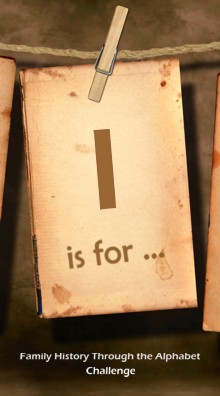 |
| Click on images to enlarge |
To me, it seems that the circular started as a report back to England on the progress of the various colonies but then it seems to develop into a resource for those intending on travelling to new colonies.
You may have read my blog about my grandfather? He built a boat which was launched in the Tarra River near Port Albert. I grew up in the area so it was very interesting to read about the town of "Albert" and the potential for the area; "it is considered a better and safer harbour than Port Phillip"
I find the reports from the early explorers fascinating. The final of page of the July 1843 circular shows a map of NSW in 1843 (before Victoria became a separate state).
I can just imagine my ancestors reading the circular, to investigate the opportunities available in the faraway lands, to find out about the conditions on the ships, the cost of the voyages and what conditions awaited them.
From the 1858 Colonization Circular: “Candidates must find their own outfit, which will be inspected before embarkation by an officer of the Commissioners. The smallest quantity that will be allowed is for each male over twelve – six shirts, six pairs of stockings, two warm flannel shirts, two pairs of new shoes or boots, two complete suits of strong exterior clothing, four towels, and two pounds of marine soap; and for each female over twelve – six shifts, two flannel petticoats, six pairs of stockings, two pairs of strong boots or shoes, two strong gowns (one of which must be made of a warm material), four towels, three sheets for each berth occupied on board ship, and two pounds of marine soap.
Two or three coloured shirts for men, and an extra supply of flannel for women and children are very desirable.”
If you are interested in the past, then you will surely find something of interest in the Colonization Circulars. Happy reading :)
 |
| Click on the picture for more "I" posts |


Thanks for bringing the Colonisation Circular to our attention. It certainly makes fascinating reading, and it will help us to study our families in the context of local history, social history, etc.
ReplyDeleteThank you Judy. I totally agree with you.
DeleteIt is hard to believe that I was never interested in history at all when I was at school! .
Sharon, the history curriculum when I was at school was rather boring. Maybe it's better now. When I did the University of New England course in Local, Family and Applied History, many of my classmates were teachers (and there were also some librarians).
DeleteThanks again Judy. I was very interested in your link. For some time now I have been contemplating doing some studies. This gives me another option to explore.
DeleteInteresting. I didn't realize there were rules about what people had to have for travel.
ReplyDeleteThe rules for on the ships were very strict too but I suppose that they had to be.
DeleteI also find it interesting to read the prices and wages in times gone by. In 1859, a pair of mens shoes was 5 shillings.
Couldn't you lose days reading those old publications, Sharon? Another great resource and interesting post.
ReplyDeleteDefinitely. My pile of things I want to read just keeps growing but the time to read it seems to reduce!
DeleteFascinating reading for sure!
ReplyDeleteI think so but my husband and kids would disagree! lol
DeleteThanks Sharon. Fascinating reading indeed. I too particularly enjoy reading about prices & wages. Recently came across an old pay slip of mine, from the mid 1960's... Hooley Dooley.
ReplyDeleteLol. I had a similar reaction when I found an electricity account from 20 years ago!
Delete